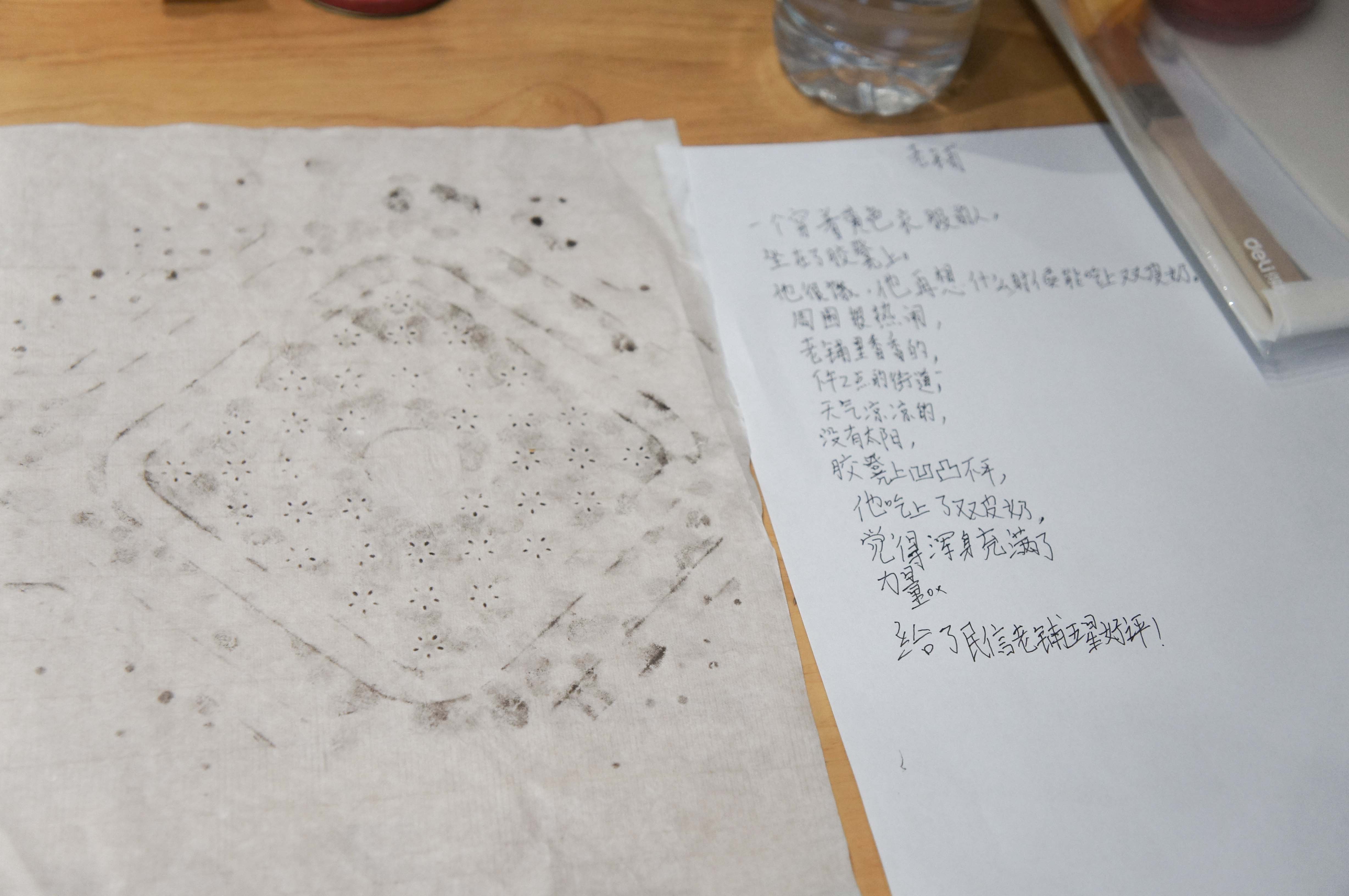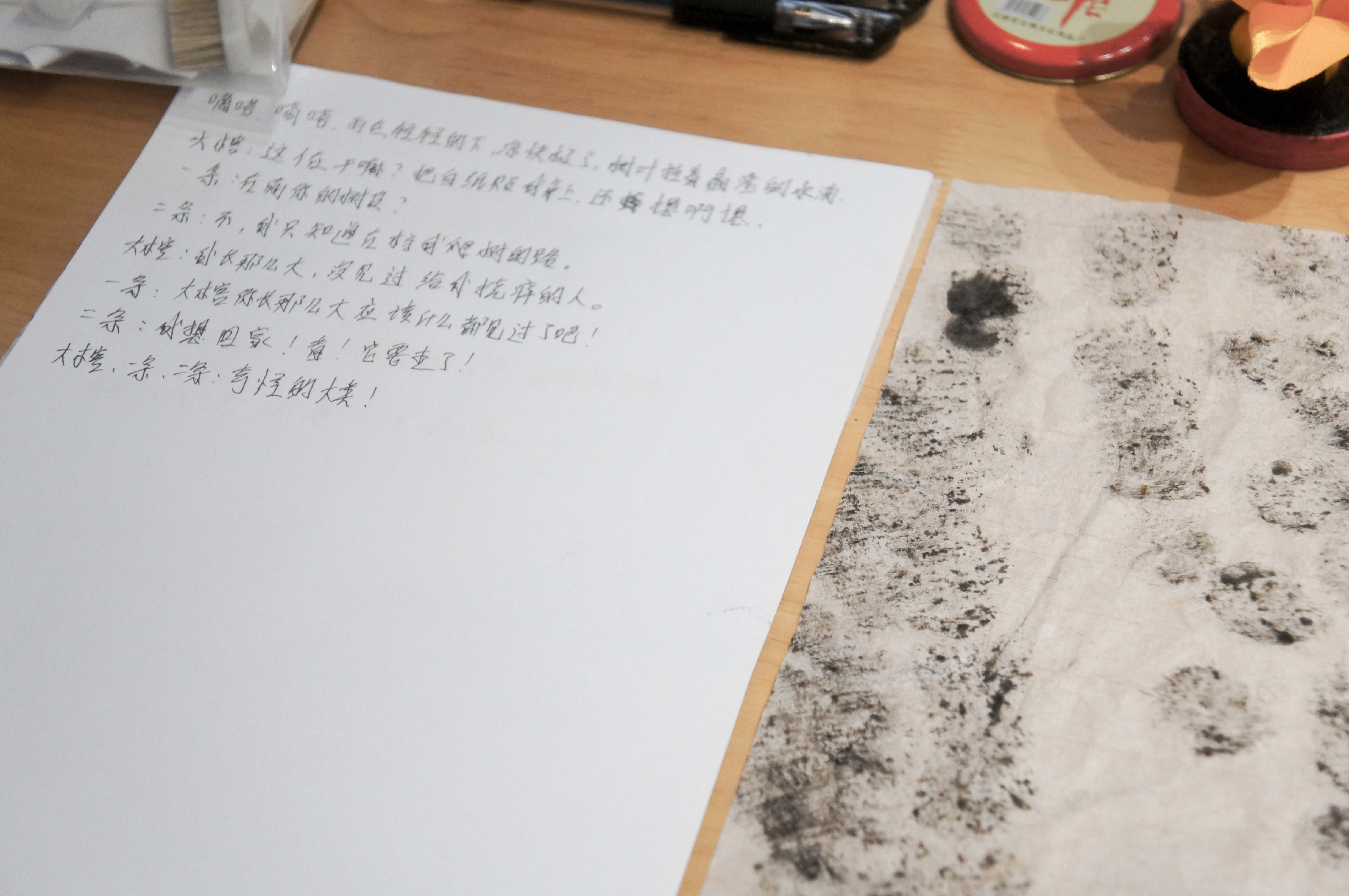Urban Archaeology 在城市里考古
(2024)







Urban Archaeology is a participatory workshop hosted in Ronggui, Shunde, combining writing and rubbing practices with the local community. Urban spaces are in a constant state of flux, where buildings and streets shift between renewal and decay as communities evolve. This workshop sought to uncover the hidden stories beneath these transformations, asking questions about how cultural commercialization shapes the future of cities.
The 'Old Street'—once the first cement road in the city, built in 1921, but now gentrified by the Department of National Assets for social media appeal, covering its original surface with stone. In our exploration, we found untouched cement alleys filled with the imprints of past residents: footprints, wheel marks, and pawprints. We invited the community to revisit these alleys, capturing these marks through rubbings and connecting their fragmented histories through written narratives.
Together, we reimagined these traces through poetry and storytelling, weaving a new narrative from the remnants of history. This journey through the 'silent' remnants of Ronggui revealed forgotten layers of the city, and we created a dialogue with the obscured past. The workshop's outcomes were compiled into a booklet titled Former Haunts.
从“一船蚕丝去,一船白银归”的丝业中心到重要的粮食集散地,从现代工业到文旅开发,一层层复杂的社会历史脉络交叠在一起,共同构成了如今的容桂,位于网红打卡点“渔人码头”附近的东风社区正是其中的一个切片——土地在城市规划变动中不断流转,建筑、街道和居民也经历着动迁开发或闲置荒废。曾经当地人引以为豪的顺德第一条水泥路——旧马路,已看不见原有的肌理,在景点打造的过程中马路被新的材料重新覆盖。新马路两侧也已搬迁了三百八十余户居民,昔日的生气不复存在。一切便在这样的变化中来来去去,留下痕迹又被再次覆盖,产生复杂的肌理——这些历史留下的痕迹总是沉默的、被无视的。我们如何通过这些痕迹与隐匿的、沉默的过去产生对话?或许这真实的过去已无法追溯,但我们是否可以通过想象重新编织一份历史和叙事,并以这种方式让现下的人们对过去重新产生连结?
在游走于沉寂的巷子之中,这些曾书写过容桂历史的人们,犹如专心雕刻兵马俑而留下了指纹的工匠们,不经意间将消逝的过去暴露在我们的身边。借用考古学的“微痕分析”,我们向当地社区以及更广泛的社区发起招募,组成一支城市临时考古小队穿梭于街巷之中,拓印下那些不经意间与我们相遇的历史印记,并通过想象与之对话,编织新的叙事。
本次工作坊的拓印与写作成果汇编成册《故地重游》。
